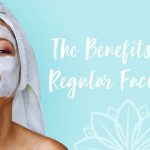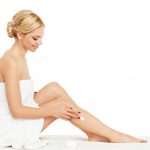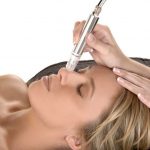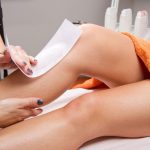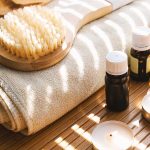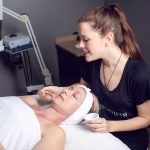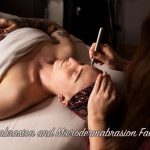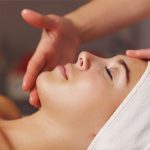Many people carefully tend to the skin on their face, regularly exfoliating, cleansing, and moisturizing. But when’s the last time you tended to the skin on the rest of your body?
Your skin is your largest organ, after all, and there is one simple step you can add to your morning routine that can greatly improve your health – dry skin brushing.
I’m not only referring to your skin’s aesthetic appearance, either (although many would agree this is important too). The benefits of dry skin brushing go beyond skin deep, offering whole-body benefits to your health.
Dry Skin Brushing: 7 Key Benefits
Your skin is a complex system made up of nerves, glands, and cell layers that, when healthy, serves as a buffer that helps protect your body from extreme temperatures and chemicals.
It also produces antibacterial substances to protect you from infection and enables your body to produce Vitamin D when exposed to the sun. Your skin even contains densely packed nerve cells that act as messengers to your brain, making your skin a crucial part of your interactions with the world around you.
Another crucial role your skin plays is supporting optimal detoxification. But if your skin is overrun with toxins or dead skin cells, it will not be able to eliminate wastes from your body efficiently.
This is where dry skin brushing can be invaluable, not only in brushing off dead skin cells but also in activating waste removal via your lymph nodes. Beyond this, dry skin brushing offers multiple benefits including:
Stimulate Your Lymphatic System
In your body, your lymphatic system is the system responsible for eliminating cellular waste products. Hundreds of miles of lymphatic tubules allow waste to be collected from your tissues and transported to your blood for elimination, a process referred to as lymphatic drainage.
When your lymphatic system is not working properly, waste and toxins can build up and make you sick. Lymphatic congestion is a major factor leading to inflammation and disease. By stimulating your lymphatic system and helping it release toxins, dry skin brushing is a powerful detoxification aid.
Exfoliation
Dry skin brushing removes dead dry skin, improving appearance, clearing your clogged pores, and allowing your skin to “breathe.”
Increase Circulation
When you dry brush your skin, it increases circulation to your skin, which encourages the elimination of metabolic waste.
Reduce Cellulite
Dry skin brushing may help to soften hard fat deposits below the skin while distributing fat deposits more evenly. This may help to diminish the appearance of cellulite.
Dry brushing is also said to help reduce cellulite by removing toxins that may break down connective tissue, although some believe the effect is temporary (and mostly a result of skin become plumper and swollen after brushing).
“When we’d heard dry skin brushing was an effective method for reducing cellulite, we knew we had to include it in our anti-cellulite road test. Sure enough, it was indeed one of the more successful ways to smooth away less-than-perfect spots on your legs.”
Huffington Post
Stress Relief
The act of dry brushing has been described as meditative (especially if you do it in a quiet space) and may reduce muscle tension, calm your mind, and relieve stress. Many compare it to a light whole-body massage.
Improve Digestion and Kidney Function
Dry skin brushing may go even deeper, helping to support your digestion and organ function.
“…many naturopathic doctors use dry brushing to help with bloating because massaging the lymph nodes helps the body shed excess water and toxins. One of the immediate effects of dry brushing is smoother skin, but it can also help improve digestion, kidney function, and more.”
Skincare and Spa Expert
It’s Invigorating
Many people become “addicted” to dry skin brushing (in a good way) because it simply feels so good. Along with glowing and tighter skin, regular dry skin brushers report feeling invigorated after a quick session.
Dry Brushing: How to Do It
First, you’ll need a high-quality dry brush. Look for one with bristles made from natural materials. They should feel stiff but not overly so. Ideally, choose a brush with a long handle so you can reach your entire back and other hard-to-reach spots.
Dry skin brushing should be done daily for best results, or even twice a day if you like. Try incorporating it into your normal daily routine, such as doing your brushing before your morning shower and then again after work (avoid doing it too close to bedtime, as it may leave you feeling energized).
When brushing, always brush toward your heart, which is best for circulation and your lymphatic system. You can brush your entire body (including the soles of your feet). Start at your feet and work your way up to your legs to your arms, chest, back, and stomach. Avoid brushing your face (unless you have a special brush designed for this delicate skin), your genitals, or any areas with irritations or abrasions (including varicose veins).
The pressure you apply while brushing your skin should be firm but not painful (avoid “scrubbing”). Your skin should be pink after a session (not red or irritated) and you can brush for as long (or as little) as you’d like. An average dry brushing session may last between two and 20 minutes.
Try It… You’ll Probably Get Hooked
The investment in dry skin brushing is small – you can find a high-quality brush for under $20 – but the pay-off is large. If you’ve never tried it, you’re likely to be pleasantly surprised.
“I’ve only been at this for about two weeks, but I’ve already experienced many of the benefits listed above. For one thing, dry skin brushing just feels really good. It’s one of those miraculous practices that manages to be both relaxing and energizing all at the same time. For another, it cured my cellulite! …Dry skin brushing also helped heal some ingrown hairs and some innocuous though unsightly bumps on my arms. My skin is softer and no longer dry or flakey. Additionally, though I’m not sure whether or not it’s related to dry skin brushing, I must say that I’ve been sleeping better and experiencing less ‘brain fog’ throughout the day!”
New Skin Brushing Devotee | Examiner
A Surefire Plan for Flawless Skin
Eating a healthy diet as described in my nutrition plan, which focuses on whole, bioavailable organic foods is your number one strategy for helping your body detox naturally while supplying the necessary nutrients your skin needs to thrive. Adding dry brushing on top of a healthful diet will only magnify its benefits. That said, certain foods are particularly effective at promoting beautiful, clear, healthy skin, so if you’re not yet eating the following on a regular basis, now is a great time to start:
Animal-based Omega-3 Fats
Ideally fresh, organic, and locally grown vegetables. Fresh vegetable juice is also wonderful for your skin, as are carotenoids, which give red, orange, and yellow fruits their color, and also occur in green vegetables. Studies have shown that eating foods with these deeply colored pigments can make your face actually look healthier than being tanned
Fermented Vegetables are even better as they can be made with the same vegetables but are converted by bacteria into superfoods. Fermented vegetables help promote the growth of friendly intestinal bacteria and aid in immune balance and digestion.
Astaxanthin—a potent antioxidant—has been found to offer effective protection against sun damage when taken as a daily supplement. Some sunscreens are also starting to use astaxanthin as an ingredient to protect your skin from damage.
Dry Brushing Routine
Once you’ve addressed the dietary suggestions above, the following routine can help you to remove excess flakes to reveal the glowing skin underneath.
- Use a dry body brush to get rid of flakes, stimulate your lymphatic system, and more as described above (do this for a few minutes on your dry skin, before getting wet)
- Avoid using soap or use the least amount possible, especially in winter or in dry climates, as this may promote and aggravate dry skin
- Instead, apply a natural body scrub to exfoliate your skin (also apply this to your skin before getting wet, and choose one that also contains oil to moisturize)
- After your shower, apply a heavy natural body butter or natural moisturizing oil (not mineral oil or baby oil) to help seal in moisture; coconut oil works well for this purpose
Learn more about our Hydrating Body Treatments.

